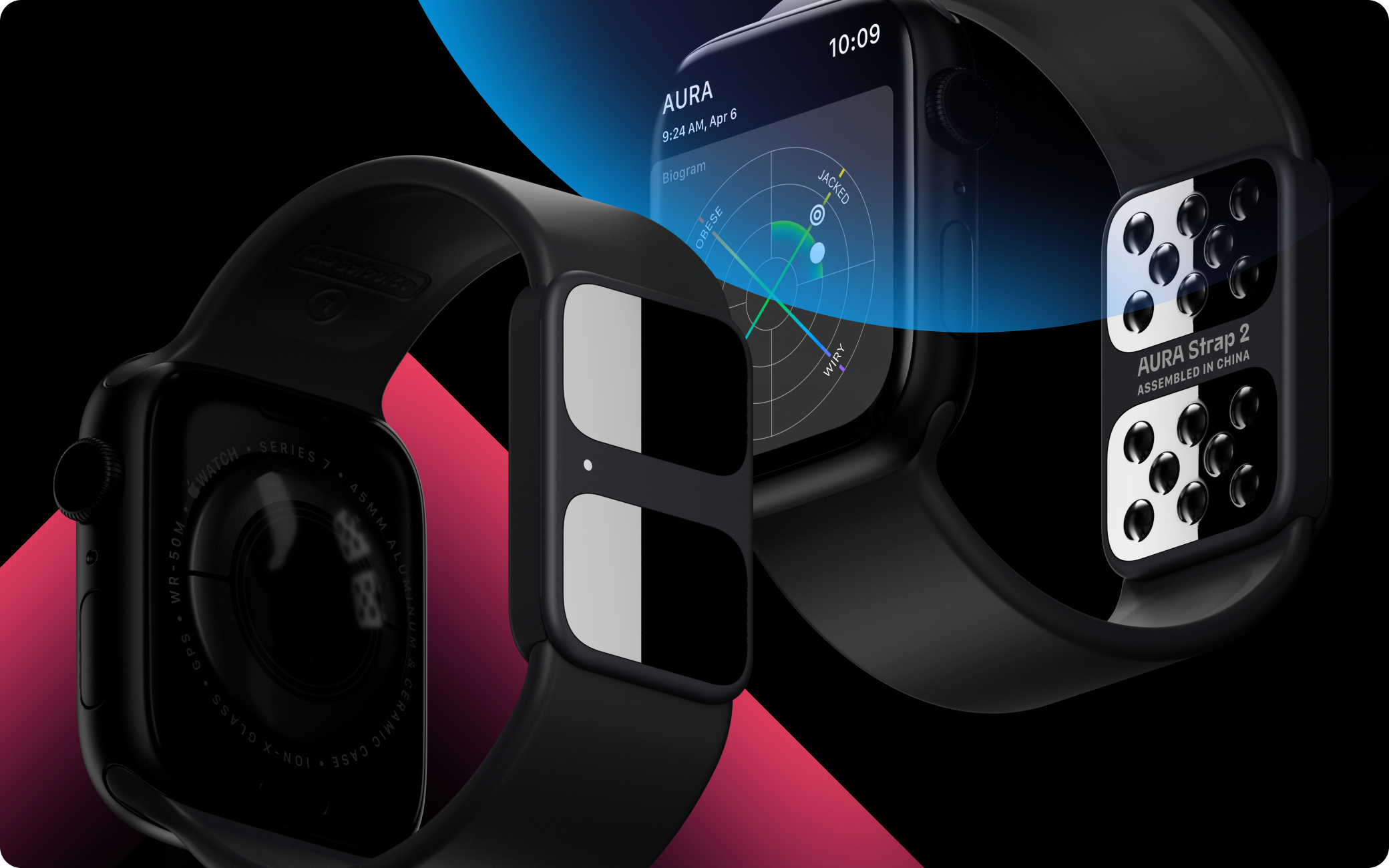Measurement validation research
We’re excited to announce that the AURA Devices R&D team has completed extensive testing of the AURA Strap 2, the advanced Apple Watch replacement band that measures your body composition and hydration level using hand-to-hand bioelectrical impedance analysis (BIA).
In this article, we’ll tell you more about AURA Strap 2 and BIA, the technology that powers it. Then we’ll walk you through the research we conducted to verify the accuracy of the measurements, and reveal the results.

AURA Strap 2, the new generation fitness tracker with BIA at its core
We first introduced wrist-wearable health tracking in 2018 with the standalone AURA Band, taking BIA “smart scale” technology mobile, and bringing it to a wider audience at an affordable price. Then, in 2020, the AURA Strap was introduced as a replacement strap for the Apple Watch, and now, in 2022, the AURA Strap 2 has been introduced.
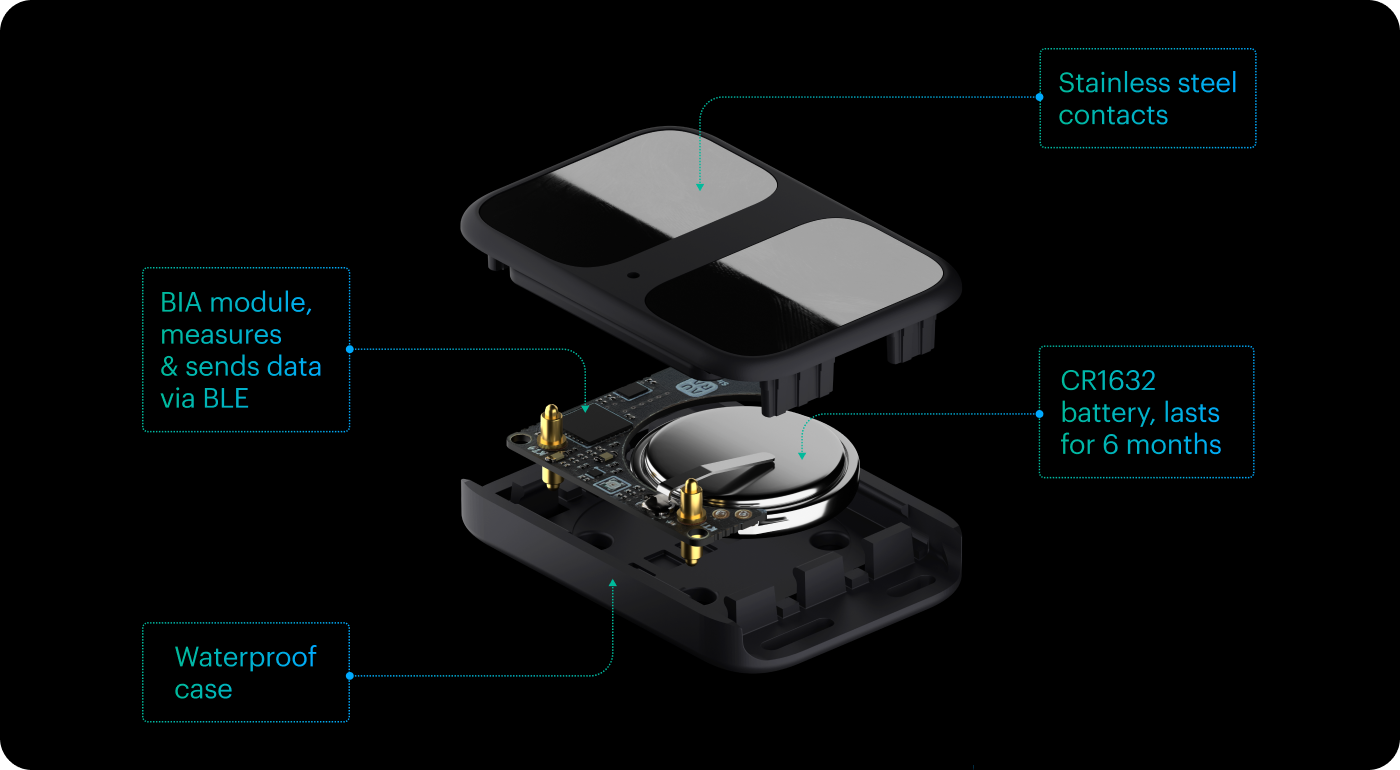
What can you do with AURA Strap 2? The device provides you with detailed information about your body composition to help guide you through a diet and/or workout regime. Every step towards your health and fitness goals can be monitored by measuring fat (including visceral fat), muscle, water, protein, minerals, and more. But how exactly does BIA technology work?
How does BIA measure body composition?
Human body tissue has electrical properties, as you can easily tell when you build up static electricity on a fuzzy carpet and get a little shock when you touch a doorknob. Scientists have been studying these properties for over 150 years, and BIA is one of the technologies that emerged from these studies. Fat tissue is a much better conductor of electricity than muscle tissue, and BIA technology uses this fact, along with advanced statistical analysis, to predict the mass of different components of the body.
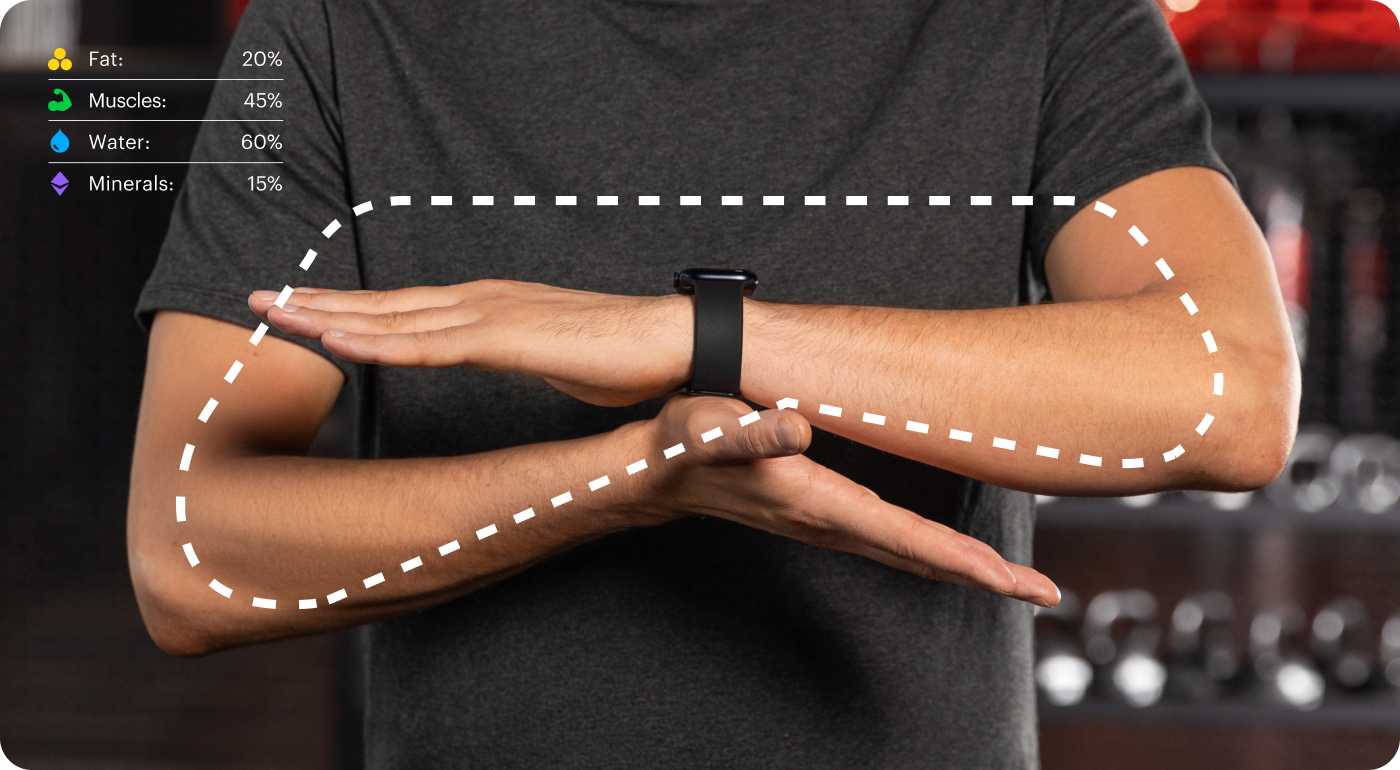
It’s common knowledge that the body is made mostly of water, and that water containing impurities (i.e., almost all water) conducts electricity. But there’s an important difference between water that’s inside the cells (intracellular water, or ICW) and water that’s outside the cells (extracellular water, or ECW). Cell membranes are very poor conductors, so the water inside and outside, separated by the membrane insulator, together create a natural capacitor. Therefore, a low-frequency alternating current (AC) can flow through ECW but can’t reach ICW, whereas a high-frequency current can pass through the membranes and into ICW as well. This natural feature of body tissue can be described just like a simple parallel electrical circuit with resistors on both branches (the ECW and ICW), and a capacitor on the ICW branch:
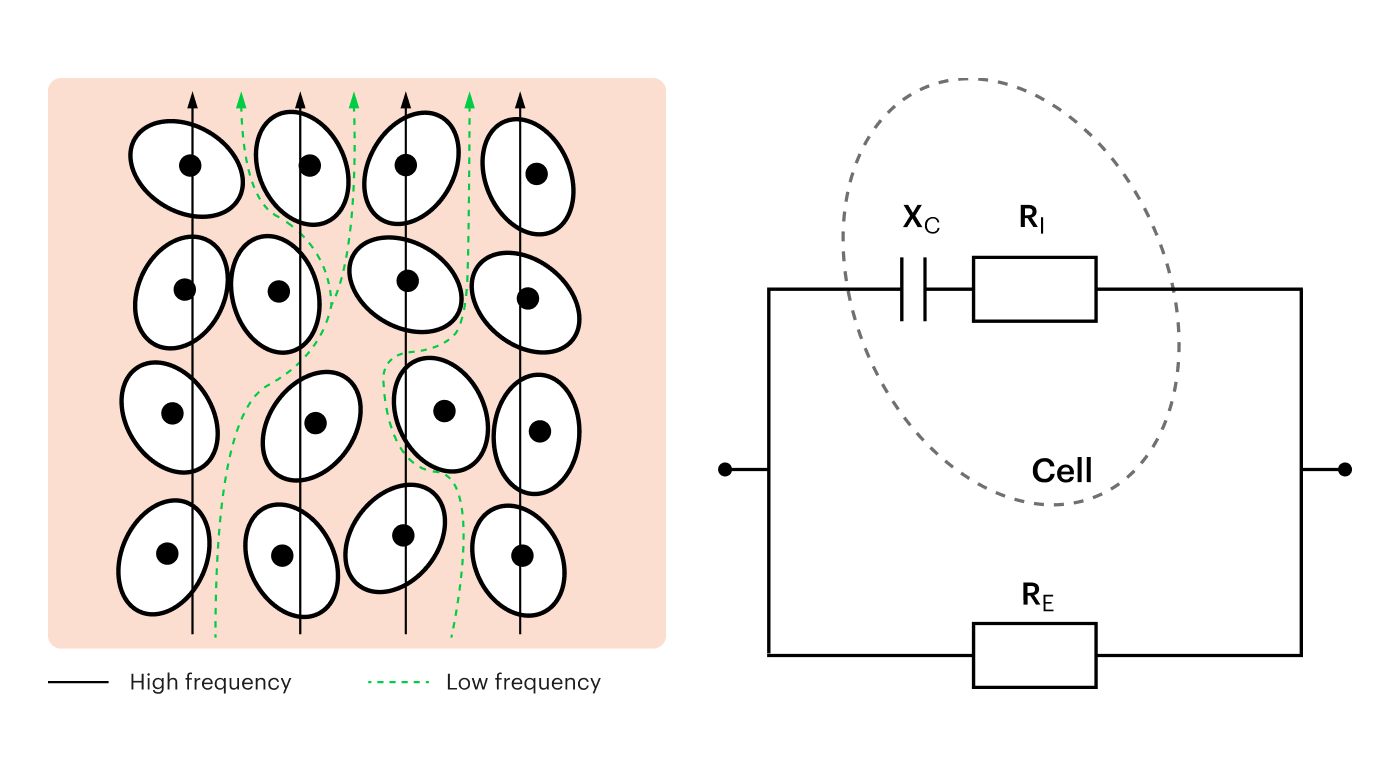
BIA measures the impedance of this circuit, or how much the tissue resists the electrical current that passes through it. Using the height of the person, the total body water (TBW) can be calculated, and from there, fat-free mass (FFM). Subtracting FFM from total body mass gives fat mass (FM). However, height isn’t enough to get an accurate measurement, since the human body isn’t a perfect cylinder. Laboratory BIA equipment uses a five-cylinder model (arms, legs, and torso), but that means you need to attach electrodes all over your body. AURA uses a novel two truncated cones (TTC) model for the arms as a nice balance to take convenient measurements with the hands without sacrificing too much accuracy.
How accurate is BIA?

Now we come to the meat of our analysis. BIA only directly measures the impedance of the body itself, and uses other data about the person, along with complex mathematical models, to infer body composition. The best way to test the accuracy of BIA is to use one or more widely accepted laboratory technologies. There are several methods used by the scientific community, but among them, dual-energy X-ray absorptiometry (DEXA) is probably the most common, and is considered the gold standard. Another highly reliable method is the skinfold measurement method.
The DEXA method passes x-rays through the body, which partially absorbs them, depending on the energy of the radiation and the type and thickness of the biological tissue. This allows analysts to determine density and mineral content of skeletal bones, as well as fat and fat-free mass. The skinfold measurement technique uses a caliper to pinch the skin in different places and measure the thickness.
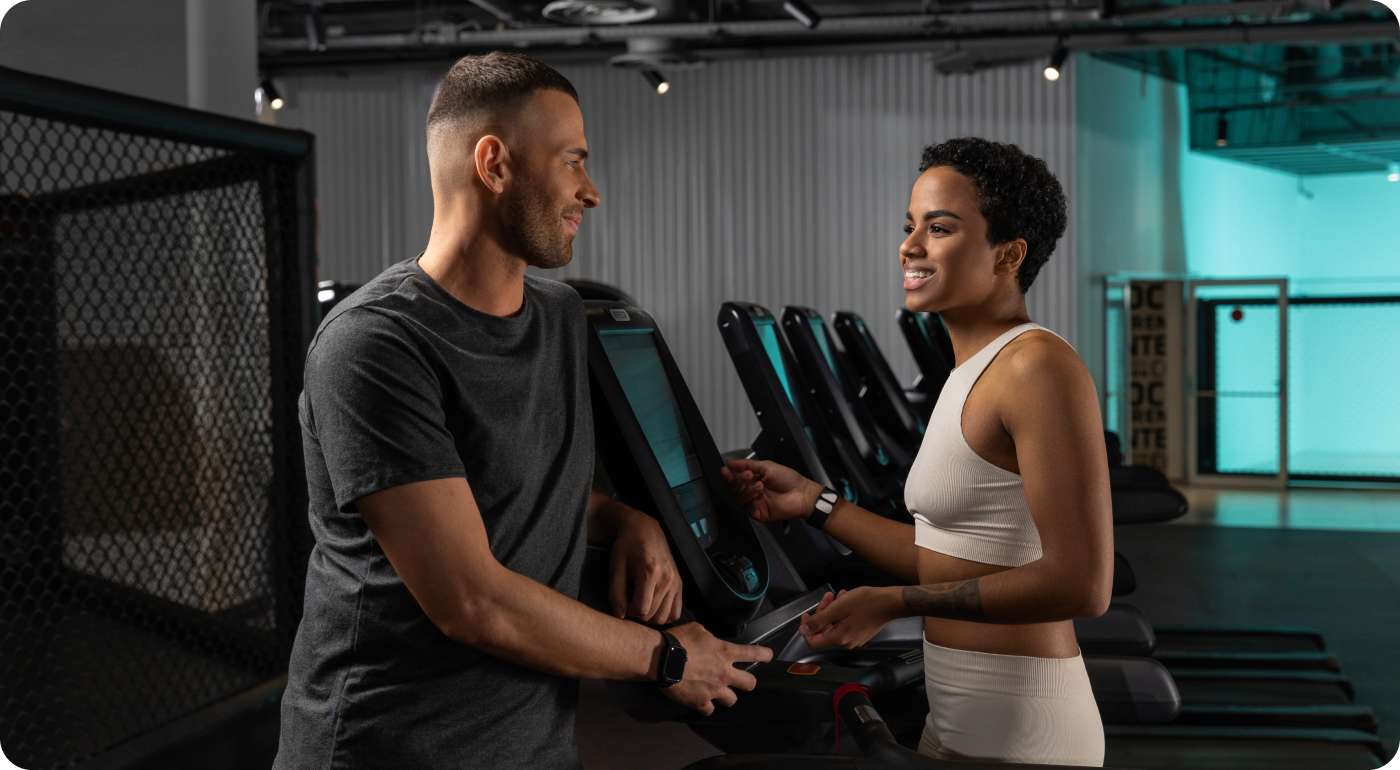
The AURA Devices R&D team recruited 42 healthy adults for a scientific study to determine the accuracy of the AURA Strap 2. First, they were given the industry-standard DEXA scan using Lunar iDXA. Their total body mass (TBM) and height were measured with a standard medical scale and stadiometer, hips and waist were measured, and skinfold measurements were taken at four sites on the arm, leg, and torso. Also, body scans were taken with inBody 230 and Samsung Galaxy Watch 4.
How did AURA Strap 2 perform?
The AURA Devices team used fat-free mass (FFM) as the target value to measure for all devices, and created statistical models to evaluate the accuracy. The FFM obtained by DEXA scan was the dependent variable used as a reference point, and the independent variables were height, age, TBM, sex, and BI (bioimpedance index).
The results of all the devices were plotted using Bland-Altman plots, which use confidence intervals, mean bias, and limits of agreement (LOA) to determine the accuracy of each device compared to the DEXA scan. We’ll cut to the chase: the AURA Strap 2 performed extremely well, with a mean bias of only - 0.007 kg, and narrow LOA (-5.517; 5.517 kg). These results were also significantly better than the previous generation AURA Strap, which was also included in the analysis. Among the other methods used, skinfold measurements came the closest to the DEXA reference, with a small mean bias, but the broadest LOA.
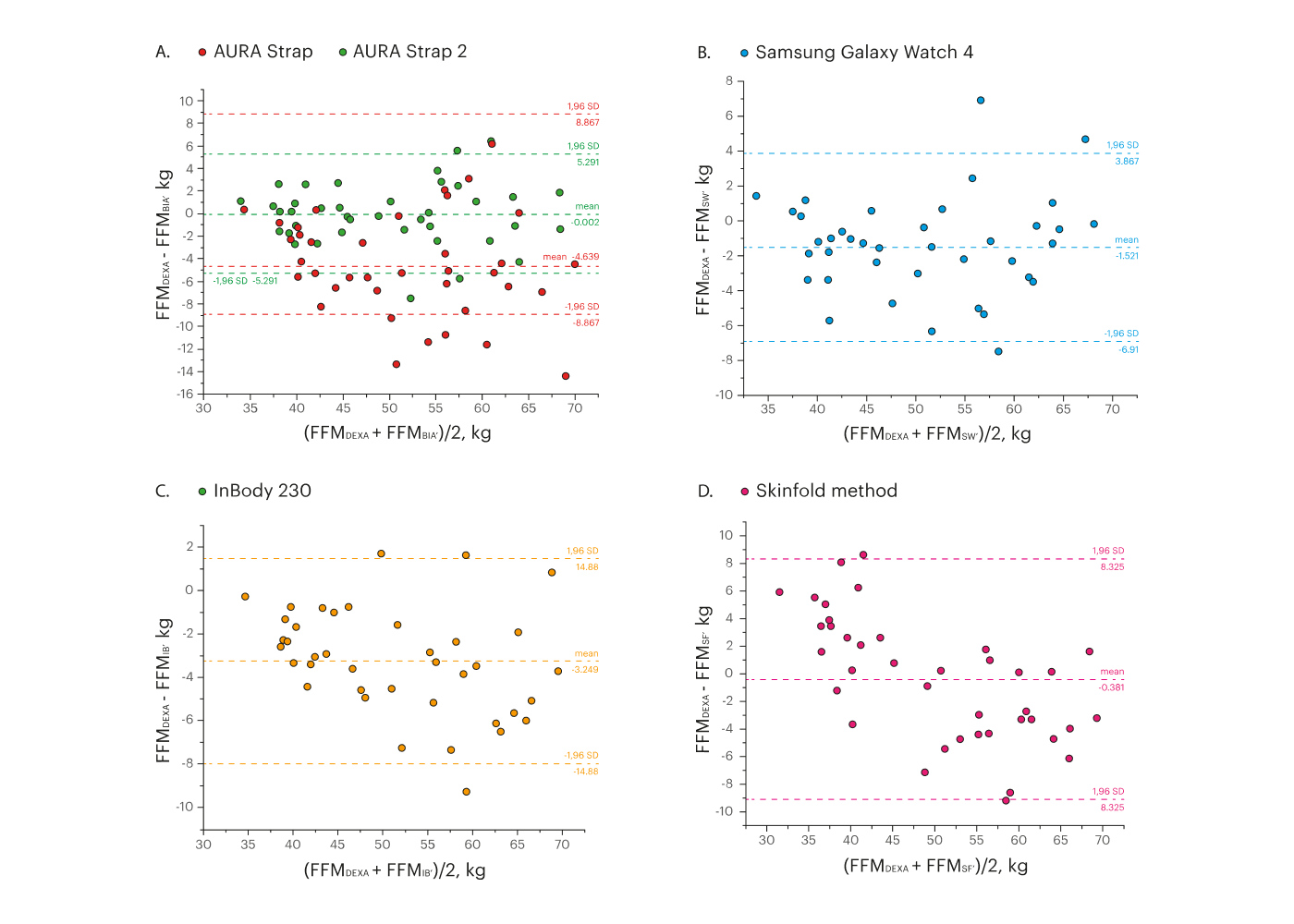
Conclusion
Any new technology or scientific advancement must be rigorously tested using techniques that are already proven to be reliable. That’s why the AURA Devices R&D team subjected AURA Strap 2 to thorough testing against the gold standard for body composition measurement: the DEXA scan.
For the complete white paper with all the results, please follow this link.
Get AURA Strap 2

